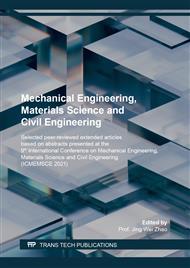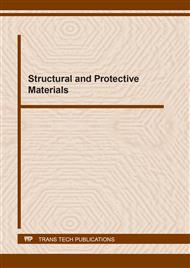[1]
K. Shiozawa, Y. Morii, S. Nishino, L. Lu, Subsurface crack initiation and propagation mechanism in high-strength steel in a very high cycle fatigue regime, International Journal of Fatigue, Vol. 28, p.1521–1532, (2006).
DOI: 10.1016/j.ijfatigue.2005.08.015
Google Scholar
[2]
Y. Murakami, Metal Fatigue: Effects of Small Defects and Nonmetallic Inclusions, Elsevier Science Ltd, UK, (2002).
Google Scholar
[3]
K. Tsuji, K. Mizobe, K. Kida, Development of Fracture Surface Etching (FSE) Method around Non-Metallic Inclusion of SUJ2 Steel, Materials Science Forum, ISSN: 1662-9752, Vol. 971, pp.65-69, (2019).
DOI: 10.4028/www.scientific.net/msf.971.65
Google Scholar
[4]
T. Sakai, Y. Sato, Y. Nagano, M. Takeda, N. Oguma, Effect of stress ratio on long life fatigue behavior of high carbon chromium bearing steel under axial loading, International Journal of Fatigue, Vol. 28, pp.1547-1554, (2006).
DOI: 10.1016/j.ijfatigue.2005.04.018
Google Scholar
[5]
K. Mizobe, E. C. Santos, T. Honda and K. Kida, Observation of non-metallic inclusions on repeatedly quenched SAE 52100 bearing steel fracture surfaces, Int. J. Materials and Product Technology, Vol. 44, Nos. 3/4, (2012).
DOI: 10.1504/ijmpt.2012.050186
Google Scholar
[6]
E. C. Santos, K. Kida, T. Honda, H. Koike, and J. Rozwadowska, Fatigue strength improvement of AISI E52100 bearing steel by induction heating and repeated quenching, Fizyko-Khimichna Mekhanika Material, Vol. 47, No. 5, pp.96-100, (2011).
DOI: 10.1007/s11003-012-9443-8
Google Scholar
[7]
M. Koga, E. C. Santos, T. Honda and K. Kida, Investigation of wear in induction-heated AISI E 52100 steel bars under reciprocating motion, Int. J. Materials and product Technology, Vol. 44, nos. 3/4, (2012).
DOI: 10.1504/ijmpt.2012.050185
Google Scholar
[8]
H. Koike, E. C. Santos, K. Kida, T. Honda and J. Rozwadowska, Effect of repeated induction heating on fatigue crack propagation in SAE52100 bearing steel, Advanced Materials Research Vols. 217-218, pp.1266-1271, (2011).
DOI: 10.4028/www.scientific.net/amr.217-218.1266
Google Scholar
[9]
I. Yoshida, K. Mizobe and K. Kida, Observation of Fracture Surface of Induction-Heated JIS SUJ2 Bearing Steel under Rotating Bending Fatigue, Materials Science Forum, ISSN: 1662-9752, Vol. 904, pp.24-28, (2017).
DOI: 10.4028/www.scientific.net/msf.904.24
Google Scholar
[10]
Lindeburg, Michael R., Engineer-In-Training Reference Manual Eighth Edition, Professional Publications, Inc., pp.37-39, (2002).
Google Scholar
[11]
Richard E. Haimbaugh, Practical Induction Heat Treating Second Edition, ASM International, pp.6-7, (2015).
Google Scholar



